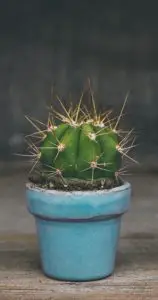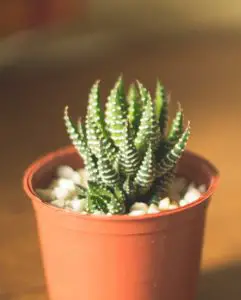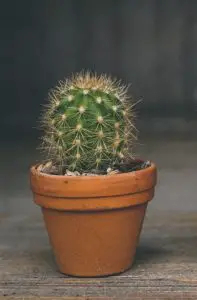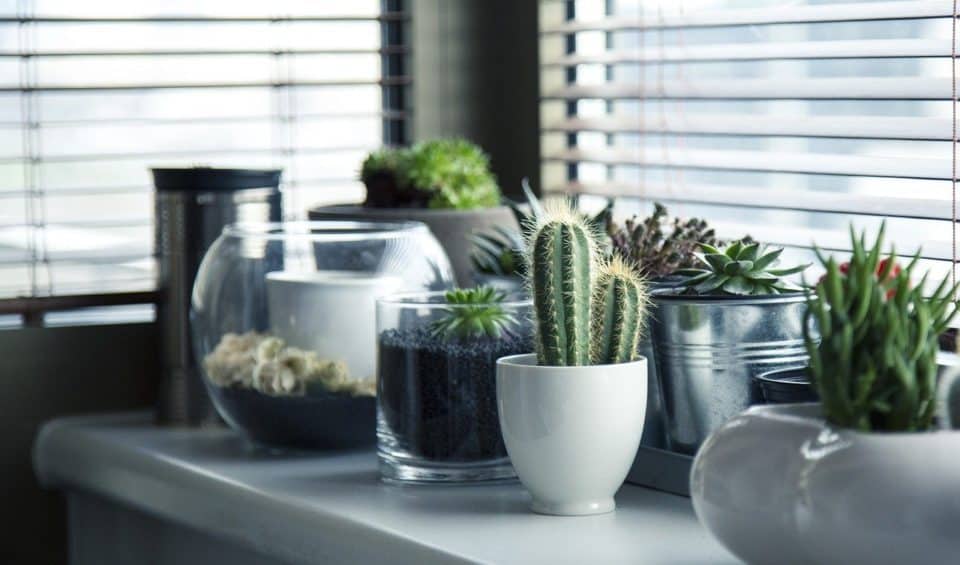Some links in the post are affiliate links and I get a commission from purchases made through some links found in the post.
People often state that if you’re a known plant killer, you should consider planting cacti.
After all, these plants are hardy and barely need your attention for the most part.
As such, you would assume that everything would run smoothly and the plants would thrive after you potted them, situated them in bright light, and occasionally watered them.
Unfortunately, while this may be enough, it’s also possible to give the plants too little or too much love, causing browning.
Luckily, it’s a common problem that many gardeners have faced and is highly unlikely to kill the plants if you act fast.
This article looks into why browning exhibits and how you can deal with your cactus needles turning brown.
Why are my Cactus Needles Turning Brown?
 Cacti can turn different colors based on the underlying issues. Did you know that they can also turn purple?
Cacti can turn different colors based on the underlying issues. Did you know that they can also turn purple?
But in this case, we will focus on the cactus needles turning brown and reasonable causes behind such changes.
The main reasons your cactus needles are turning brown relates to too much sun exposure, root rot, pest attacks or too much water.
We will consider these and more options, enabling you to identify and deal with the culprit.
Root Rot
It’s very easy to get carried away with the watering routine and give the plant much more water than it needs.
While you may think of it as love, you could be drowning the plant’s roots, making it impossible for the roots to absorb nutrients.
Eventually, root damage starts, and the roots start turning soggy, reducing their ability to support the plant’s growth.
At first, you may not notice anything. But once it starts spreading, the stem begins softening, and yellowing and the plant’s base starts turning brown.
If you do not address the issue fast, the plant could die.
Other than overwatering, root rot can occur when the potting mix is not well-draining, causing it to hold on to water more than it should.
While you might have spaced out the watering, you may find that the potting mix is working against you by continuously holding on to water from previous schedules.
Additionally, the pot may be to blame. You may find that you have not drilled adequate holes at the bottom to allow for sufficient drainage, or some items may be blocking the drainage holes.
More on Root Rot
Root rot is a tricky problem to address as the signs start showing when the rotting has damaged a significant chunk of the root.
You want to start by examining the root as soon as possible once you catch the browning cactus base.
If there seems to be damage, root rot is to blame for the browning. Root rot can either be highly advanced or minimal.
Cut off the damaged parts with a clean and sharp knife and apply sulfur powder on the wounds to help the plant heal.
Prepare a new potting mix and replant the cactus. In most cases, the plant will thrive again, enabling you to have a healthy plant.
But if the root rot is highly advanced and there’s a tiny healthy section remaining, you may want to consider cultivating another cactus.
To prevent root rot, please ensure that you do not overwater the plant and that it has a well-aerated and well-draining potting mix.
Also, check the drainage often and ensure that excess water can drain from the pot.
If you are enjoying this article, check out our article on how to propagate a Christmas cactus.
Sun Damage
 Most people would never imagine that sun exposure can hurt their cacti. After all, these plants thrive in semi-arid and arid regions where the sun is unforgiving.
Most people would never imagine that sun exposure can hurt their cacti. After all, these plants thrive in semi-arid and arid regions where the sun is unforgiving.
However, there are different species of cacti, and what you have at home may be very different from what grows in the desert.
Yours may do better in partial shade with controlled exposure to bright light.
Often, when you get your cactus from a store or a nursery, you’ll be advised to keep it shaded and slowly introduce it to the sun.
Most people think that their plants can withstand the hot sun immediately after coming from the nursery and perch the plants on windows with the most sun exposure.
If you notice that the browning has started at the top and is slowly moving towards the other plant parts, the sun is the most likely culprit as it attacks from the top.
The browning starts slow, and where the damage is minimal, it will show as a whitish hue on the side facing the sun.
The longer the plant stays in the sun, the more the burning will continue, and eventually, the white spots will develop into brown scars, which are non-reversible.
It’s better to avoid the damage from the start. Luckily, if you notice the white spots in time, you can salvage the plant and avoid ruining its appearance for good.
How? You need to move the plant to a partially shaded area. Even using sheers on a brightly lit window can help.
Also, it helps to understand what species you have in your home and read about what conditions it prefers the most.
That way, you can tailor the requirements to its needs instead of using a one-size-fits-all approach and the plant will recover.
Heat Damage
When plants are outside, they deal with elements specific to the outdoors, such as animal attacks, frost, and sun exposure.
As such, you would think that they are safer inside where you have control over the environment but not so much.
The truth is an indoor plant is still susceptible to what’s on the outside and also deals with attacks from the inside, and it comes from the most unlikely culprits like your heat vents!
You might think that placing the cactus near the heat vent will enable it to thrive because cacti do well in hot areas.
But that’s the thing. In their native habitats, the plants live in hot and dry areas that do not have hot air blowing directly at them.
With this continuous flow of dry air, it’s easy for the plant to dry, and even its waxy surface cannot protect it from this sad fate.
Please note that this also applies to air conditioning vents. Keeping your plant cool during the summer could hurt it, and it would take a long time for you to notice the changes.
Also, leaving the plant close to a window where hot air and cool drafts continuously make their way into the room could be to blame.
How can you tell that the indoor conditions are to blame? The browning will be on one side!
Instead of the whole plant exhibiting brittleness and browning, only the side close to the vent will show the signs.
In this case, fret not, as the solution is quite simple- move the plant to a location where it’s not in contact with any of these drafts!
Extremely Low Temperatures
The sun is harmful to your plant, and so is frost.
In areas where the winter seasons are icy, you may want to protect your plant by situating it away from the window and regulating the temperatures in the home.
Otherwise, if the cold gets to the plant tissues, the cells start rapturing. As the plant tries to heal, it will form calluses that will appear as browning and are pretty unsightly.
Once you notice such changes, it might be a good idea to move the plant to a protected section in the house.
Please note that the damage can result from the plants touching windows or any other cold surfaces in the house.
Scale Infestation
Have you heard of scales? Often, when you notice brown spots on your plant, you should consider that you could be dealing with scales.
These are tiny insects with hard coverings that feed on the cacti juices and weaken the plants eventually.
Infested parts will appear yellowish or brown, and if you do not deal with the pests fast, they will attack more sections of the plant.
If you notice such a trend in your plant, you can deal with the pests using either natural or chemical means.
You can save money and protect the environment and your home by washing off the scales with a mixture of detergent and water.
Alternatively, you can kill the insects by wiping them off with horticultural oil, which cuts off their oxygen supply and kills them.
However, if you have many plants in your home and the infestation is getting out of hand, you can always use an insecticide.
Mite Infestation
 Other than sun damage, mite infestation also exhibits as browning that starts at the top.
Other than sun damage, mite infestation also exhibits as browning that starts at the top.
These mites prefer feeding on new growth, which takes place at the top, and as they do so, they leave rusty brown spots behind.
Unfortunately, these pests are so small that you can barely see them with the naked eye. You are better off looking out for such spots and the presence of webs on the plant.
Please note that while these pests are tiny, they are pretty destructive and could kill your plant by damaging its outer tissues.
Act fast and consider your options, ranging from homemade insecticides down to industrial-grade chemicals based on the infestation.
Overall, to protect your cactus needles from turning brown and possibly dying, make sure you provide it with an ideal growing environment and keep an eye on any drastic changes.
If you enjoyed this, check out our top 10 best indoor floor plants.


